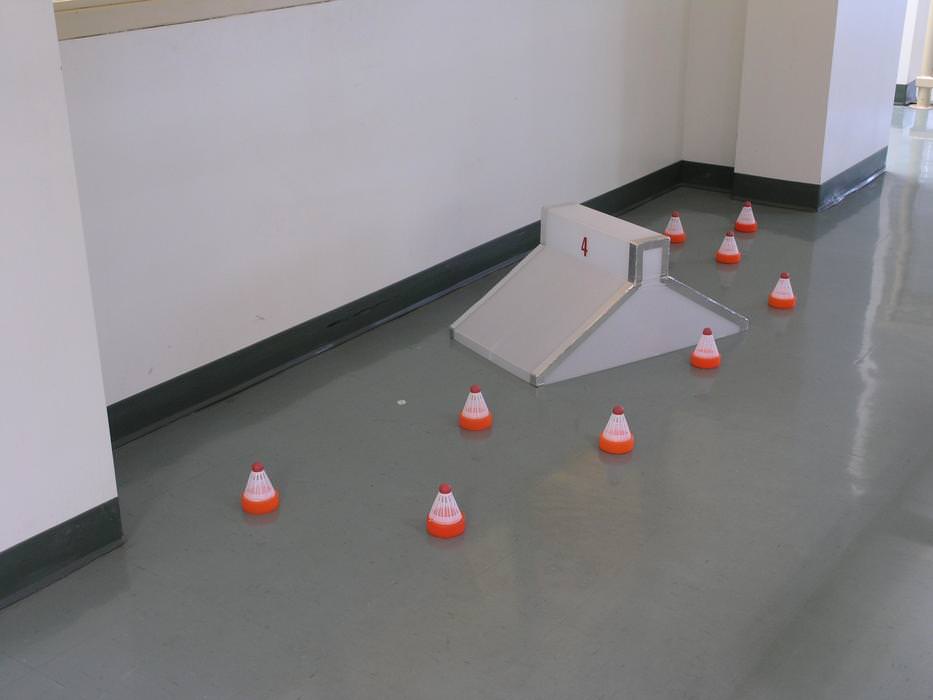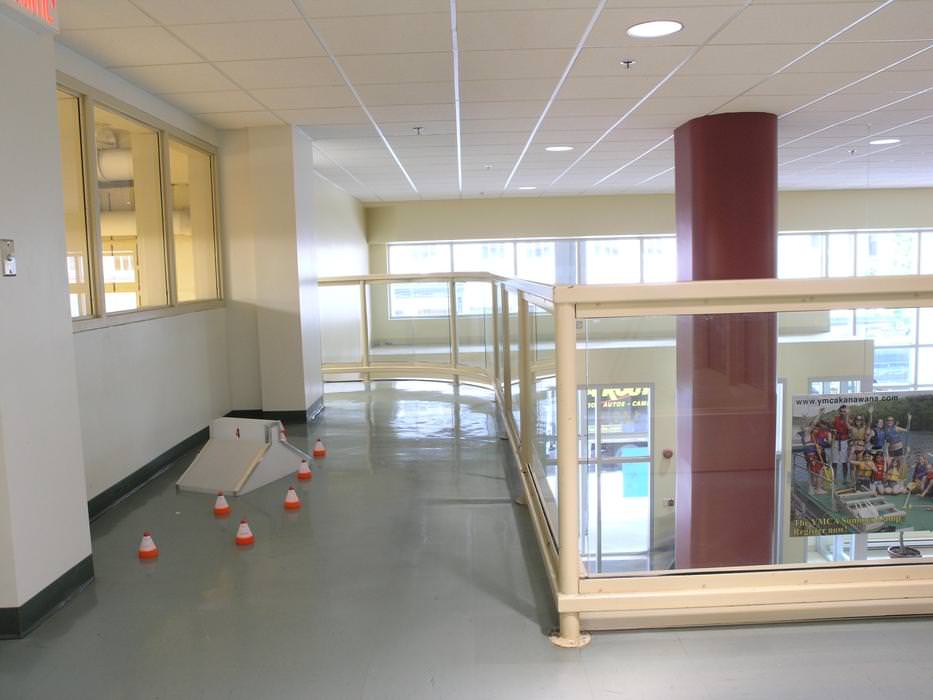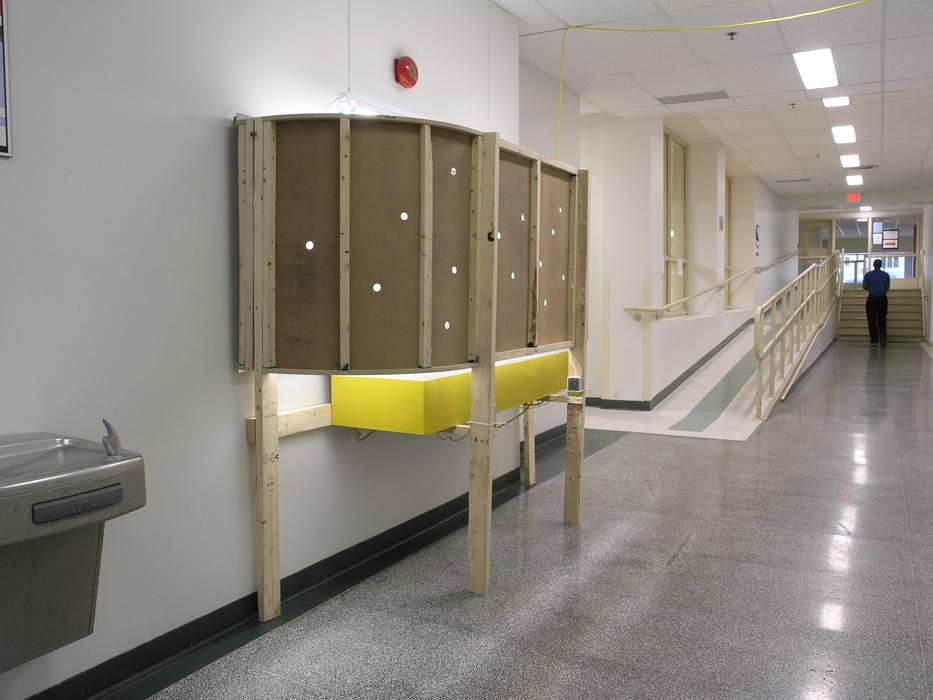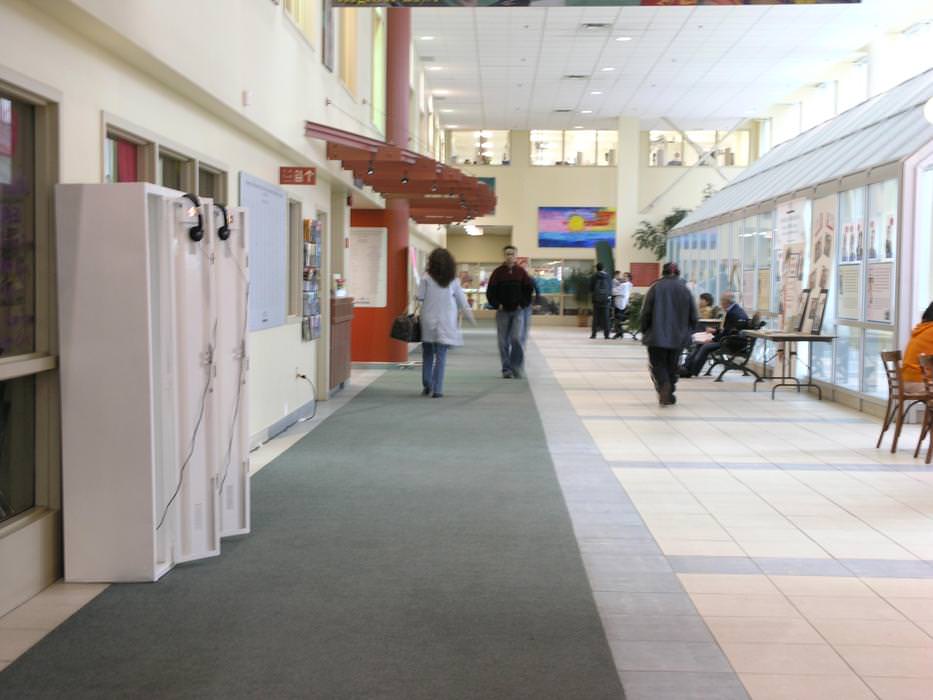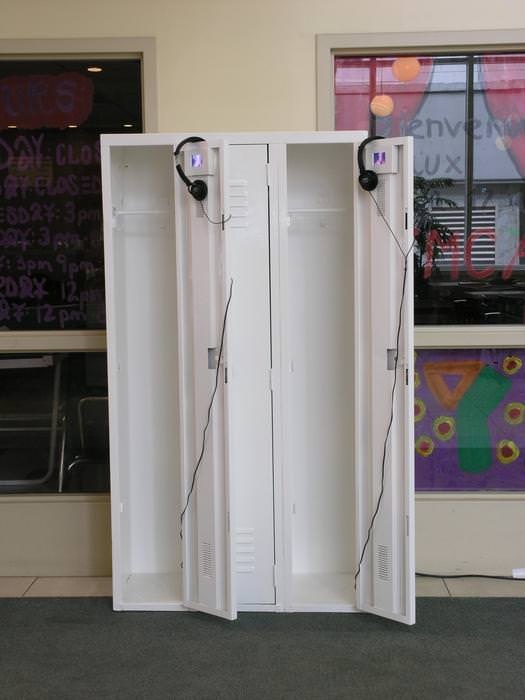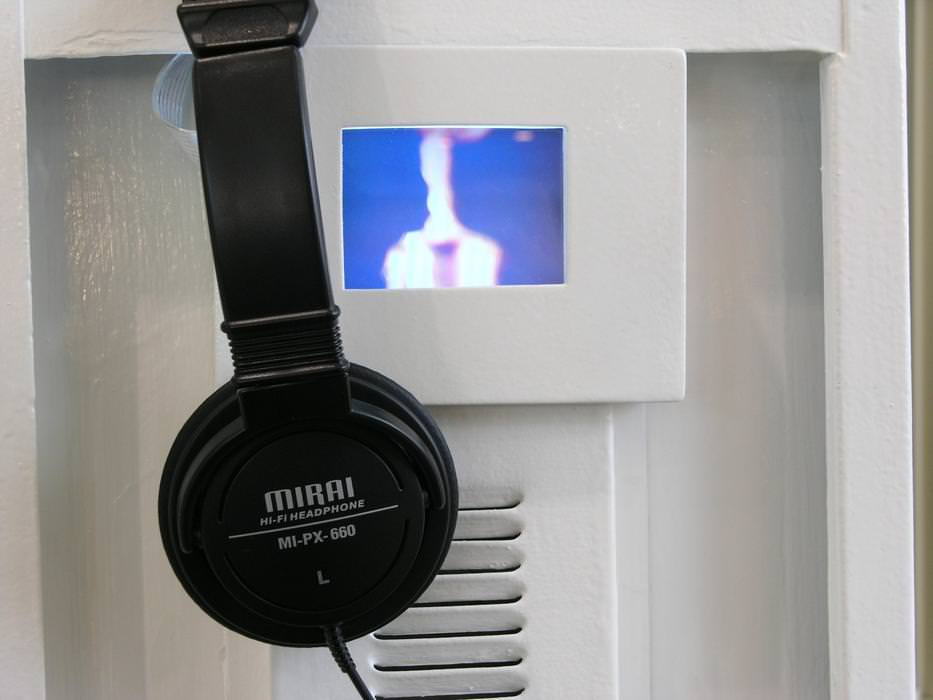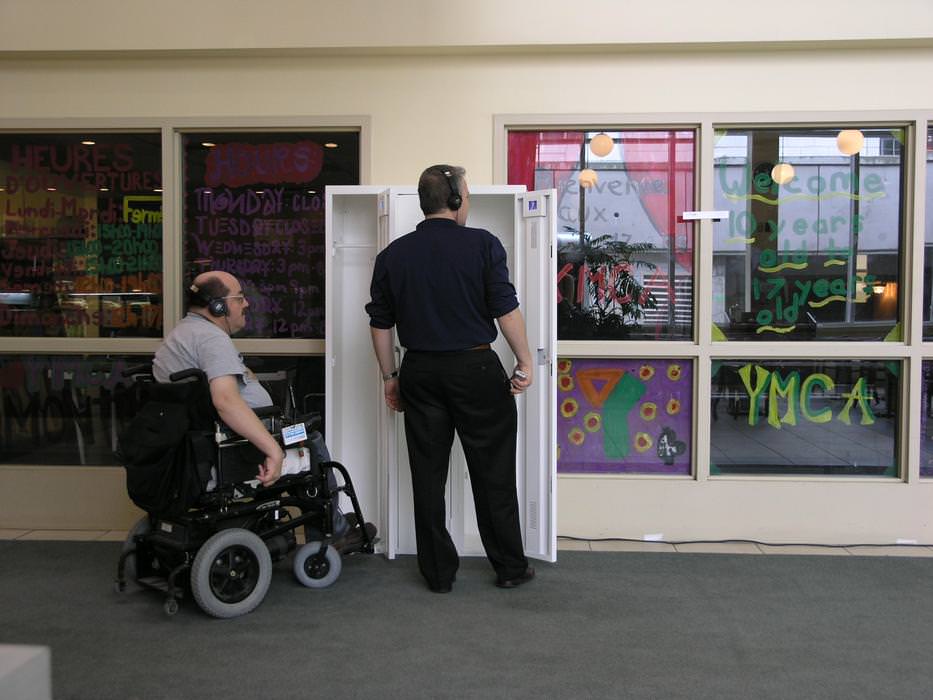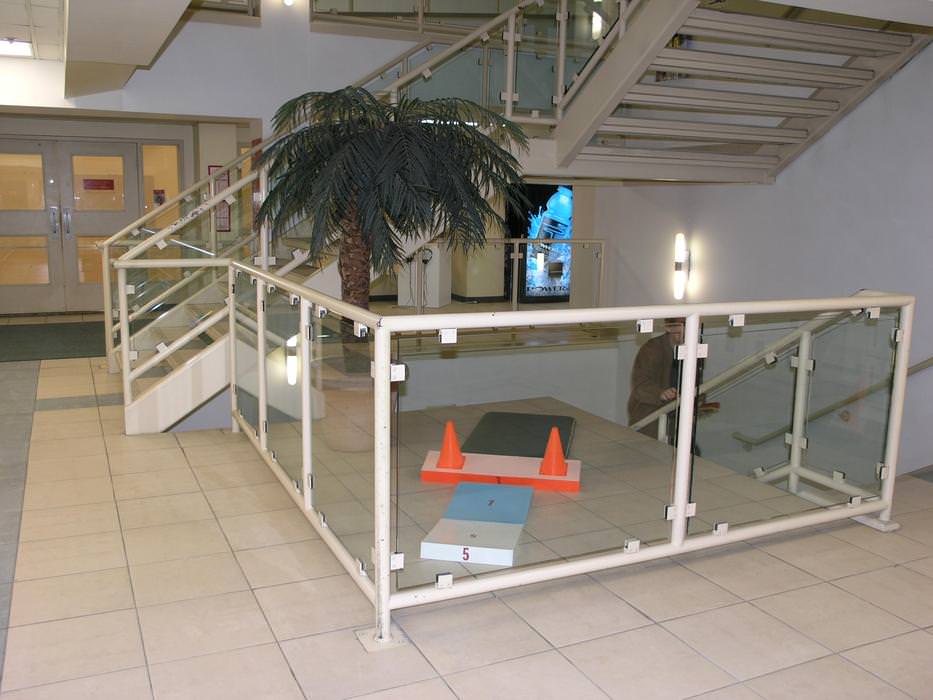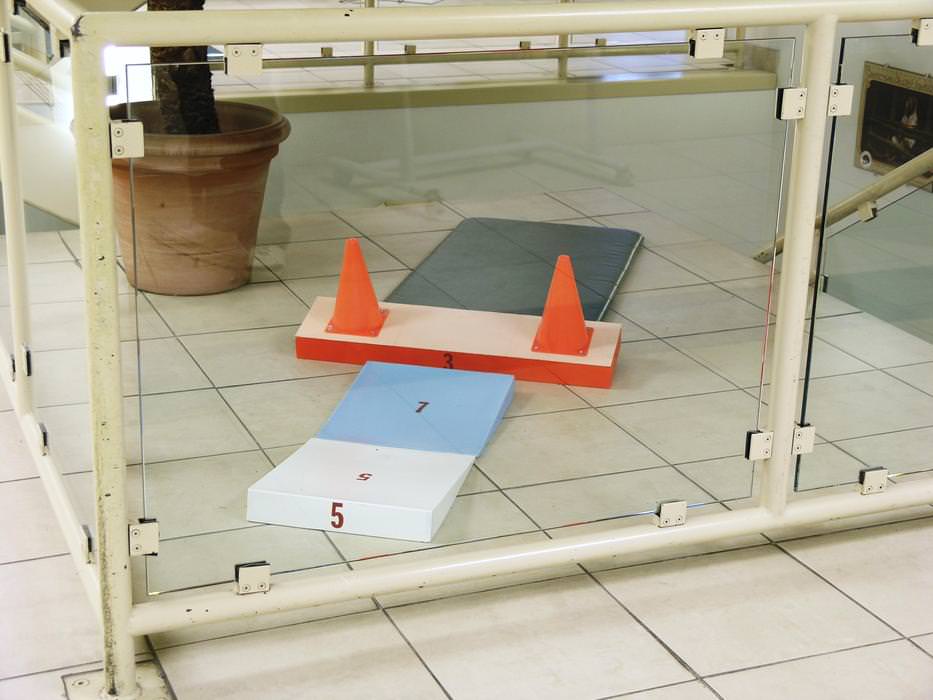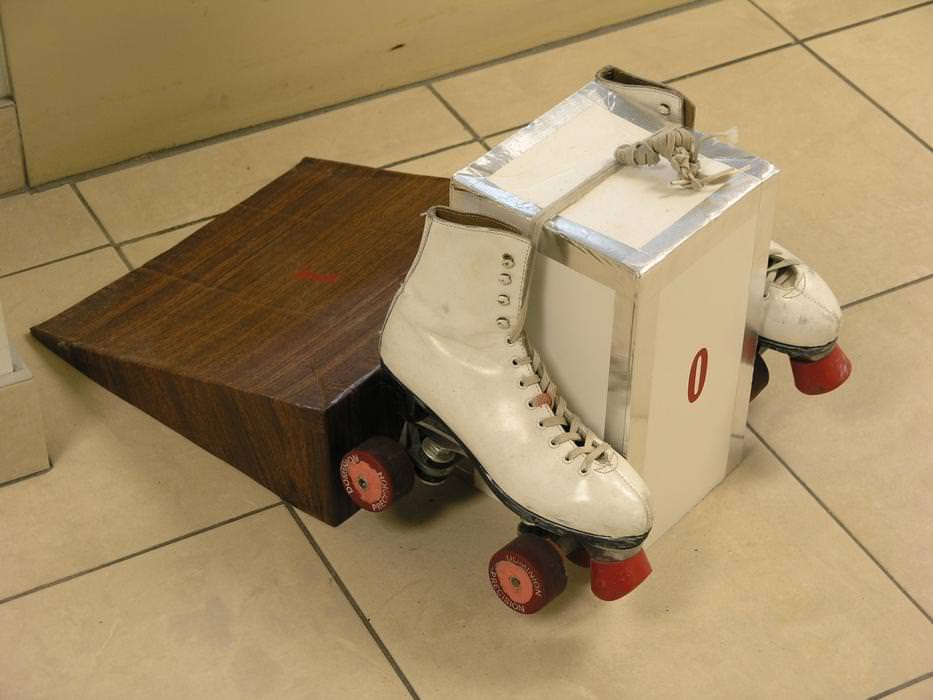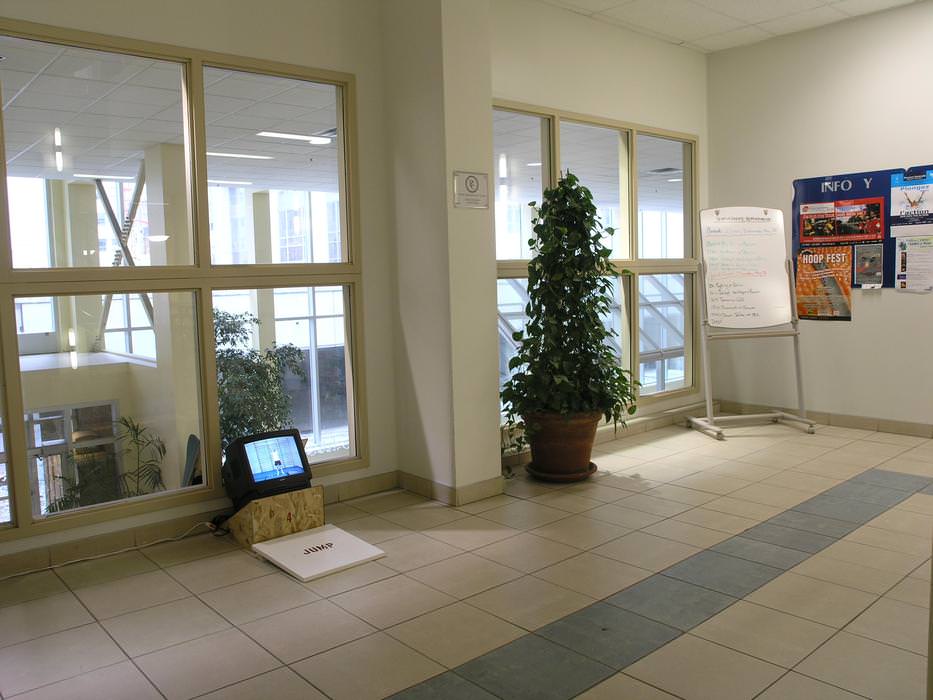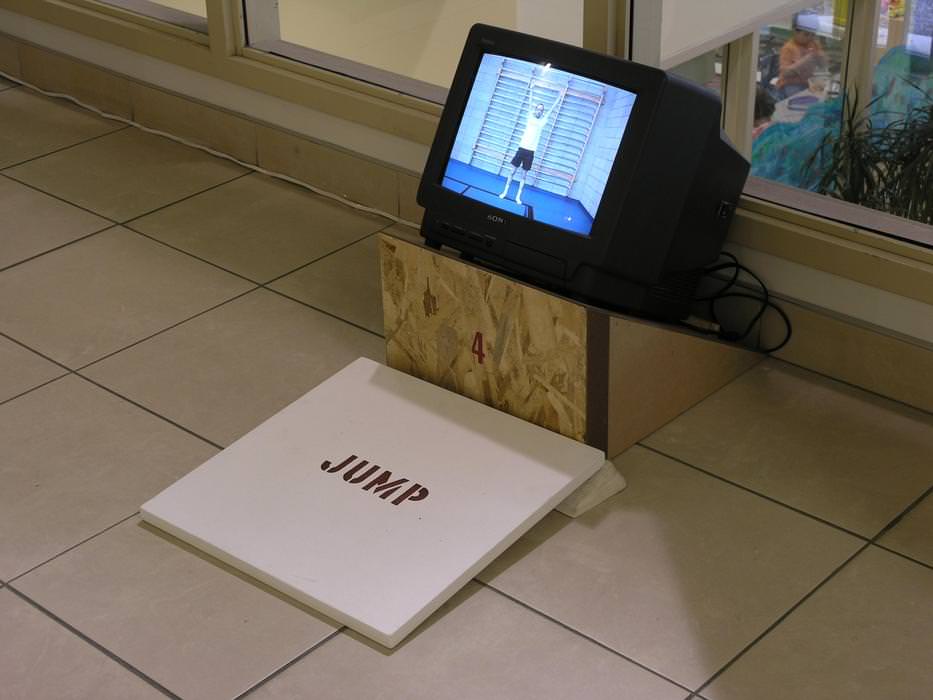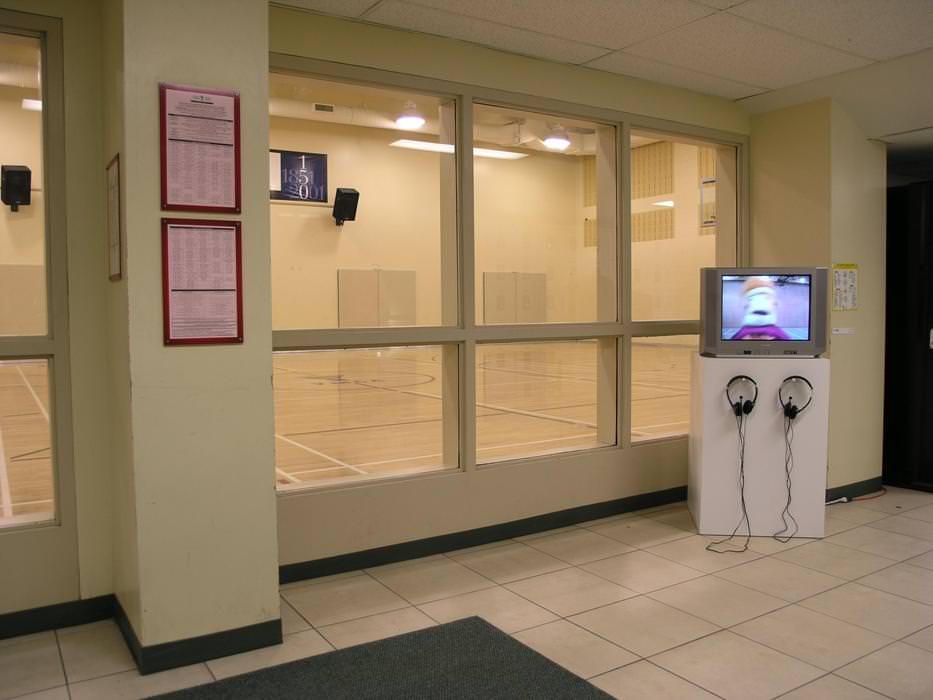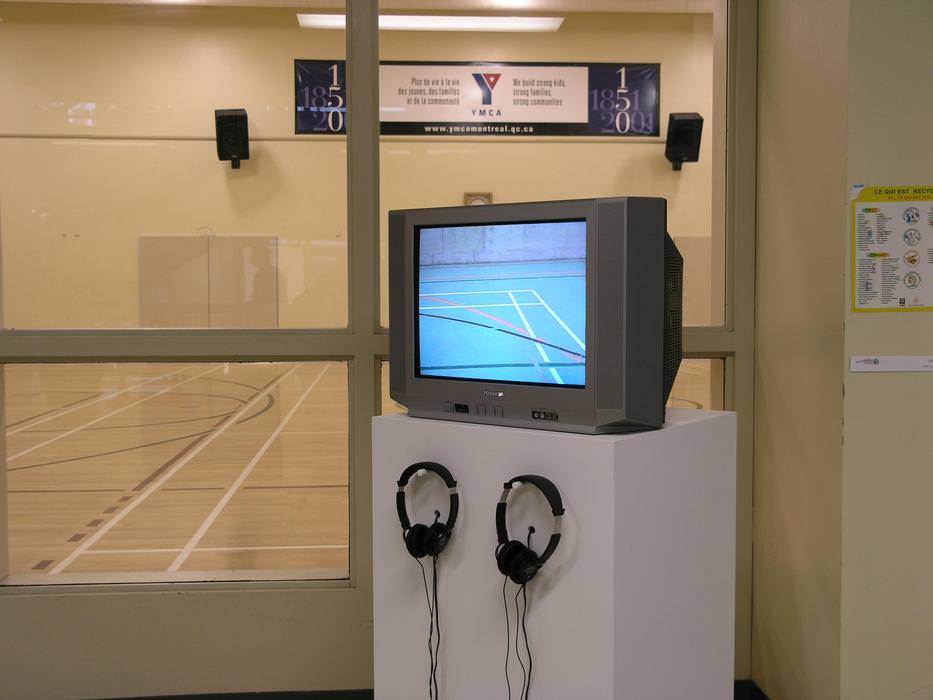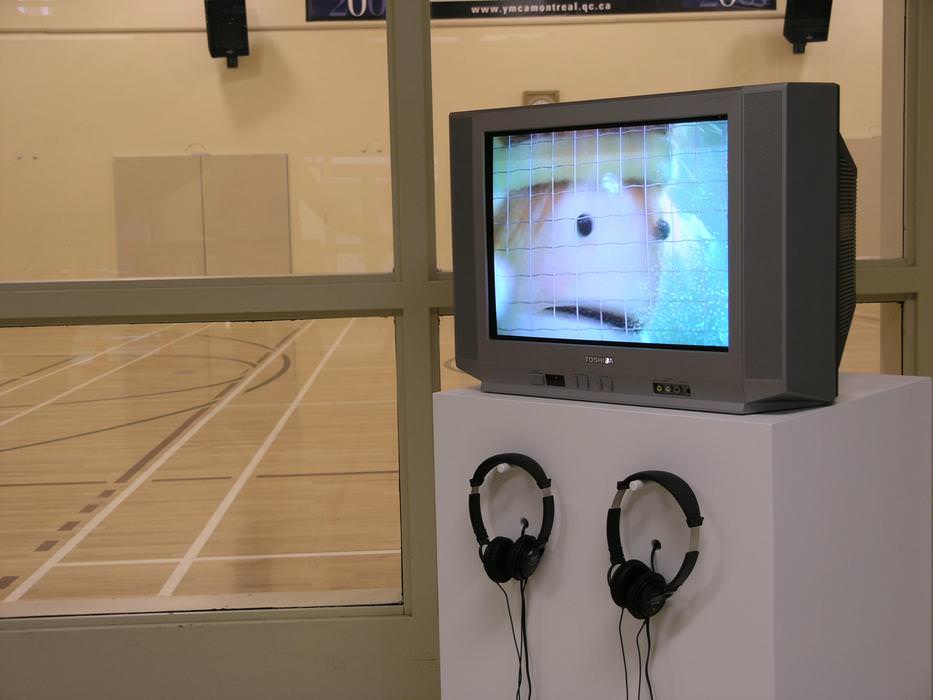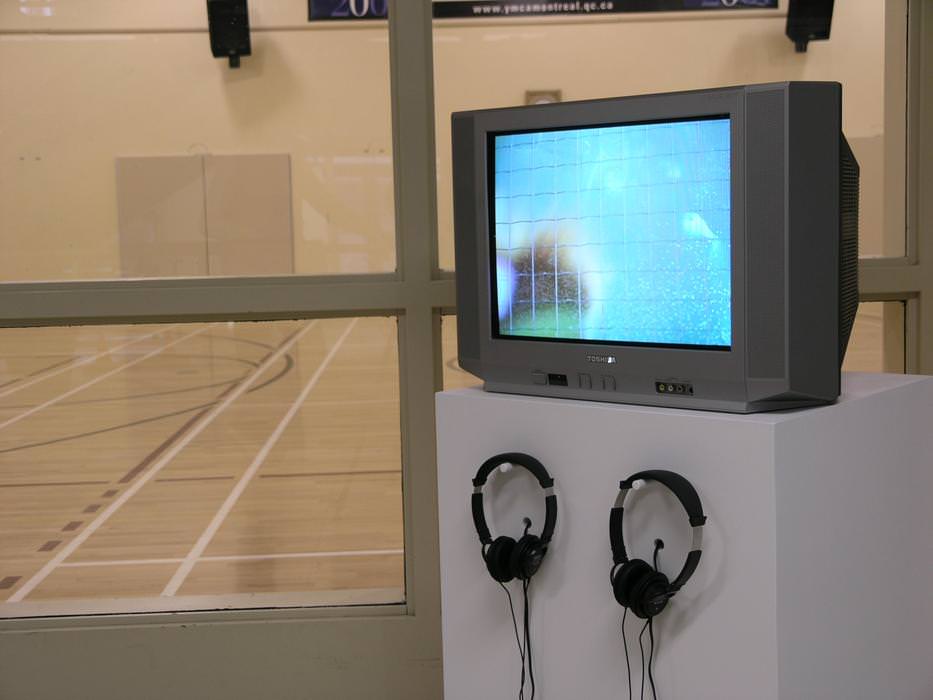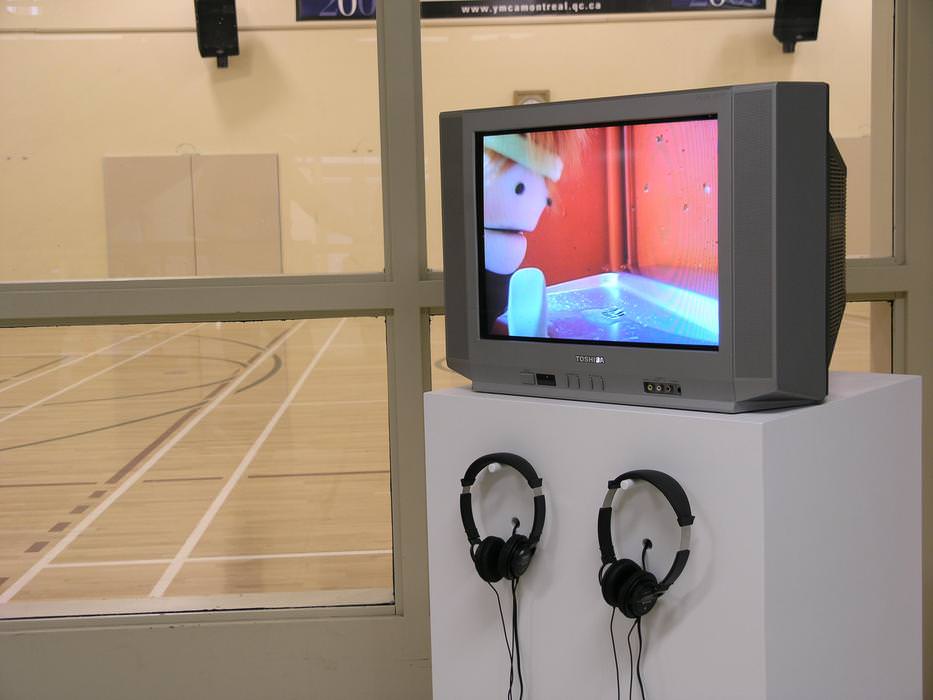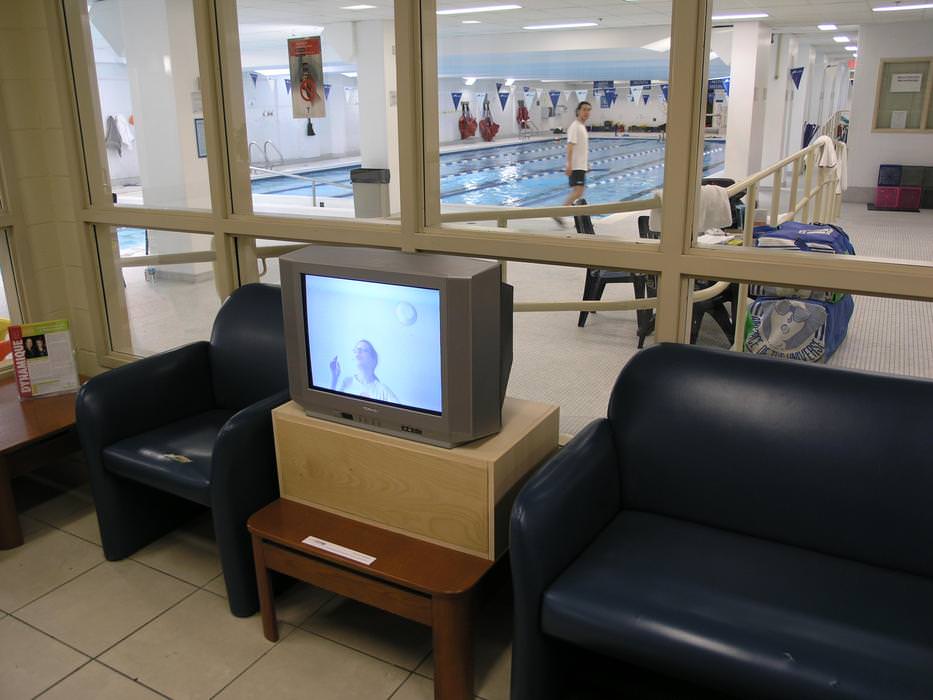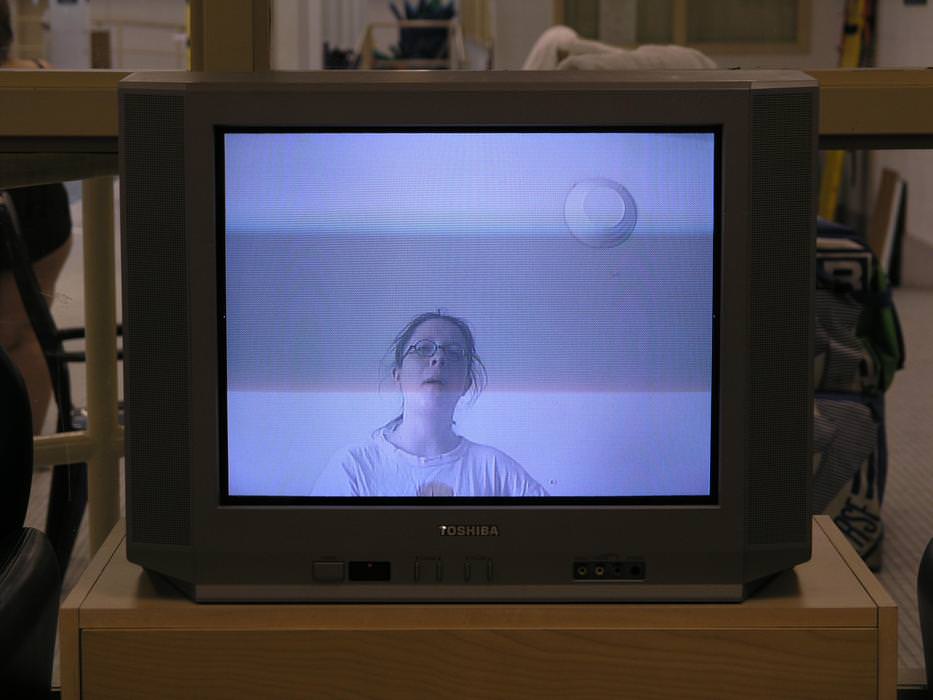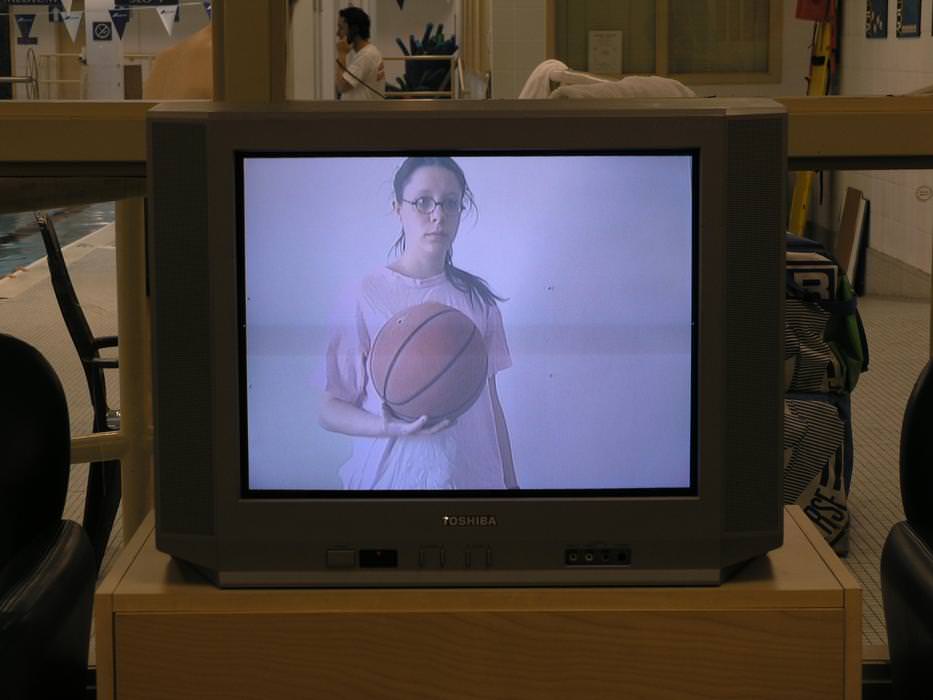Programming
Expo-sport
Multidisciplinary exhibition at the Downtown YMCA
As part of the YMCA Centre-ville activity and location, Expo-sport is a collective exhibition featuring artists Belinda Campbell, Manuelle Gauthier, Mathieu Latulippe, Frédéric Lavoie, Martin Lord and Zipertatou.
View more
Opening on Saturday, May 21 from 1 pm to 7 pm at the YMCA Centre-Ville and starting at 4 pm at the Stanley Pub
YMCA Centre-Ville at 1440 Stanley Street and Stanley Pub at 1428 Stanley Street, Montreal
Hours of visits: Tuesday to Saturday from 13h to 19h
As part of the YMCA Centre-Ville activity and location, Expo-sport is a collective exhibition featuring artists Belinda Campbell, Manuelle Gauthier, Mathieu Latulippe, Frédéric Lavoie, Martin Lord and Zipertatou. By integrating and presenting artistic proposals in a sporting context, these artists explore the possible encounter between the world of sport and that of art. Inevitably, a set of interpretations exists between the fields and codes of art and those referring more or less to various facets of the sport world. Thus, the works may appear unusual for the users of the sports center, while, for the visitors of the exhibition, the place and its function can constitute a singular context of presentation.
Les multiples positionnements sentis de la sportification monoband video by Belinda Campbell
"Sportification" is the science that summarizes sport in its essence: meditation of energy in space through variable downtimes where the positioning of the sporting object is studied with the use of sensitive parameters for report on the change in his/her condition. With the video, I struggled to identify this science that stay very obscure. I awkwardly overwhelmed the subject by being too talkative; all this has only served to ridiculize me and, by the same movement, to completely miss the subject that fascinated me so much. The multiple positions felt of the sportification is a sporting failure: the effort led to want to illustrate what is beyond me will lead me, in a next season, to start again. I am motivated.
Se tenir dans sa case - installation by Manuelle Gauthier
The locker can be one of the only places of privacy possible in a high school. In the gymnasium, one changes oneself, half hidden behind the thin door. We wander there at break time when we have nothing better to do. We stick the photos of our idols, a mirror maybe...
Here, a segment of three lockers is transformed into a listening and viewing station. A video tape reveals the perceptions and experiences of a dozen artists regarding sport. The very subjective cut offers an inordinately tragic testimony that highlights particular clichés conveyed by popular cinema for adolescents.
A simplistic question of cause and effect is implied: « Au secondaire, si j’avais été hot au basket-ball, au football ou au volley-ball, est-ce que je serais devenue une artiste quand même? ».
Then begins to reflect on the competitive aspect of sport, the factors that forge identity in adolescence, the importance of image in relationships with others, the indelible marks caused by rejection, the place of sport as a laboratory where we experience the balance of power in society, the way we teach sport in our schools, etc.
Toujours plus haut - installation by Mathieu Latulippe
Toujours plus haut is composed of various elements that form a course through different jumps. The spectator, however, is confronted rather quickly with the nonsense of the proposed elements and the impossibility of really experiencing them. Instead, and in a place of sport, the spectator becomes rather forced to inactivity and contemplation.
TRI - installation by Frédéric Lavoie
Three-part installation that questions the viewer's point of view through sound, image and object.
La partie - installation by Martin Lord
La partie starts on the opposition between spectator/player opposition to consider the difference of reality of the two groups involved, that is, distance and direct involvement. This project portrays a caricature of a disproportionate sports game. It is in a clash aesthetic that La partie highlights socio-emotional metaphors related to the role of sport in our societies.
Belinda Campbell (Montréal) is in the first year of a Master's degree in Visual and Media Arts at UQÀM. She has already presented her work in various exhibitions and at collective events, including at the Optica Gallery (2004). She is interested in self-portrait video and sound using the distanciation inside a playful, ironic and poetic staging. The result: a self-portrait that is only escaping from itself. In 2005, she will exhibit at AxeNéo7 (Gatineau) and in 2006 at L'Œil de Poisson (Quebec).
Manuelle Gauthier (Montréal) dedicate herself to video, installation and painting. Like the do-it-yourselfer who works with « résidus et des moyens du bord qu’il convertis à d’autres fins », Manuelle develops a personal mythology and constructs fragmented narratives within which she tries to emerge a tension, a dramatic charge. She recently interested herself in the documentary form because the "testimony" of the people she interviews is a rich material for her crafts. In 2005, she will complete a Master's degree in Visual and Media Arts at UQAM.
Mathieu Latulippe (Montréal) is currently pursuing a Bachelor's degree in Visual and Media Arts at UQAM. In his artistic practice, he mainly seeks, through various media, to question "common sense", and certain social issues, by creating contrasts between the reality of the work, or the situation, and what we could " normally " want from it. His work has been seen at the Événement Interuniversitaire de Création Vidéo (2004), at the Festival des Arts indisciplinés des Régions de l’Est (2004) and FIFA (2005). He will do an installation at CIRCA Gallery in 2006.
After graduating from the Université de Montréal with a degree in anthropology in 1999, Frédéric Lavoie (Montreal) is works on video, audio art, installation and photography. His videos has been shown at many festivals in Montreal and abroad. His research focuses on the individual's ability to invent ways of being in the inhabited space. He is currently pursuing a Master's degree in Media Arts at UQAM. In 2006, Skol Artist-run center will dedicate a solo to him.
Born in Sainte-Thérèse, Martin Lord (Montreal) is currently completing a Bachelor's degree in Visual and Media Arts at UQAM, following a period of study at the Strasbourg School of Decorative Arts. He has participated in several events and group exhibitions in Montreal, as well as in Strasbourg. His approach develops around the image of the body and the individual by his contribution to the world, where the notions of alienation, misappropriation, fragmentation and lack are omnipresent. He considers himself a non-specialist worker.
Activity Report
Presented at the Downtown YMCA, Montreal. Ended June 18, 2005
I can't help but be reminded of images of athletes' glorified bodies performing to achieve victory. Whether we like it or not, sports occupy an important place in our society, whether it is through numerous television campaigns extolling the benefits of physical activity or through the sporting events that populate the airwaves at any given moment. Sport, whatever the discipline, generates encounters, debates and passions. But beyond this idyllic image of sport, what remains? This question seems to run through the work of the artists participating in Expo-sport. They have thwarted the codes linked to sport to question its practice.
In the gigantic hall of the Downtown YMCA, I look left and right in search of a work to see and experience. I almost miss the installation Se tenir dans sa case by Manuelle Gauthier. But the listening post hidden in a locker quickly brings my gaze back. Gathering different testimonies, the artist makes an observation on the practice of sports in a particular context, that is to say adolescence, a pivotal moment in a life when one seeks to define oneself and to be part of a group. In a rather amusing way, the interviewees confide their "traumas" when faced with this situation. Who hasn't been the last one to be chosen for a team? Sport is an example of how the exclusion of the weakest is a natural selection process.
As I continue on my way, I am given a medal to identify me as a visitor of Expo-sport. I am told that the route is inside the center, behind doors where only members have access. I took note of the instructions and wisely followed the itinerary, without going beyond the permitted limits. In fact, the works are not in a weight room, gym, locker rooms or the pool, but in places of passage (hallway or landing). I wondered if there was a real encounter between the works and the YMCA users. In fact, the context of presentation is not strictly speaking in situ in the strictest sense. Rather, the center serves to host the works in the manner of an exhibition center. This rather rigid framework shows that one does not transform an "inhabited" place so easily. I even felt like an intruder, as if I was overstepping the boundaries of the place. The only thing missing was the whistle to tell me to leave the playground. However, this uneasiness disappeared once the headphones were put on to hear some of the works. The images are superimposed on others, in real time: a volleyball game, people on machines, children in the pool. Superimposition of meaning, duplication of reality.
The work of zipertatou, placed in front of a gym, contributes to this effect of duplication. This video, a sort of nod to old 70's commercials, presents a message about sports as a healthy playground where everything is beautiful and gorgeous. Camy at the gym is a character who walks candidly. But the moral of the story, since sometimes you need one, acts here as a punchline. Even if the sport is wonderful, the risks of injuries are present. zipertatou underlines the ridiculousness of certain messages, rather childish, that the television asserts to us daily. In this same game of detour, Belinda Campbell's Multiple Sentimental Positionings of Sportsmanship, placed in front of the pool in the basement of the YMCA, gave me pause. The artist talks about her vision of sports, ignoring the preconceived notions of the subject. The neutrality of her tone, without emotion and with a touch of weariness, is almost an anti-performance. What she says defies the competitive spirit that usually defines sport. In her view, it is a generous activity, a means of communication. However, in the particular context of Expo-sport, it is almost ironic to hear such a reflection.
Mathieu Latulippe's Toujours plus haut is displayed on all levels of the YMCA. Several objects (badminton shuttlecocks, cones, floor mats) are used for their aesthetic quality. The arrangement he makes of them diverts them from their function so that they cannot be used. He freezes them in his installation. The video that is part of the work allows to create a shift with the actions usually linked to sports. The artist prepares to make a jump, but his momentum never reaches its peak. This expectation of something that doesn't happen is a kind of missed act that, in a television context, would tend to frustrate the audience. In Martin Lord's The Game, everything seems frozen in time. This installation is reminiscent of musical boxes. Here, they are wooden players that turn on themselves. To see them, you have to bend down and choose one of the multiple openings. The eye becomes a witness to what is happening, but the body cannot participate. There is a distance between the spectators and the players since they are two diametrically opposed realities. The players are in the arena, making a spectacle of themselves in front of a faceless crowd. At the very top of the YMCA, in a rather dark space, right next to the fitness room, is TRI- by Frédéric Lavoie. Standing in the space like a monument to the glory of sport, this three-part installation combines sound, sculpture and photography. Rather minimalist in its construction, Lavoie's work mixes sports disciplines in a way that blurs the lines. The sound suggests a basketball repeatedly hitting the floor, the Plexiglas column with fake balls in it evokes ping-pong, and the piece incorporating a photograph with strobe effects gives the player a sense of movement.
Expo-sport remains an interesting experience insofar as the artists have immersed themselves in a highly regulated space. Through their sometimes playful and slightly ironic look, the artists succeeded in demonstrating certain impossibilities related to the practice of sports.
Manon Tourigny, June 2005


